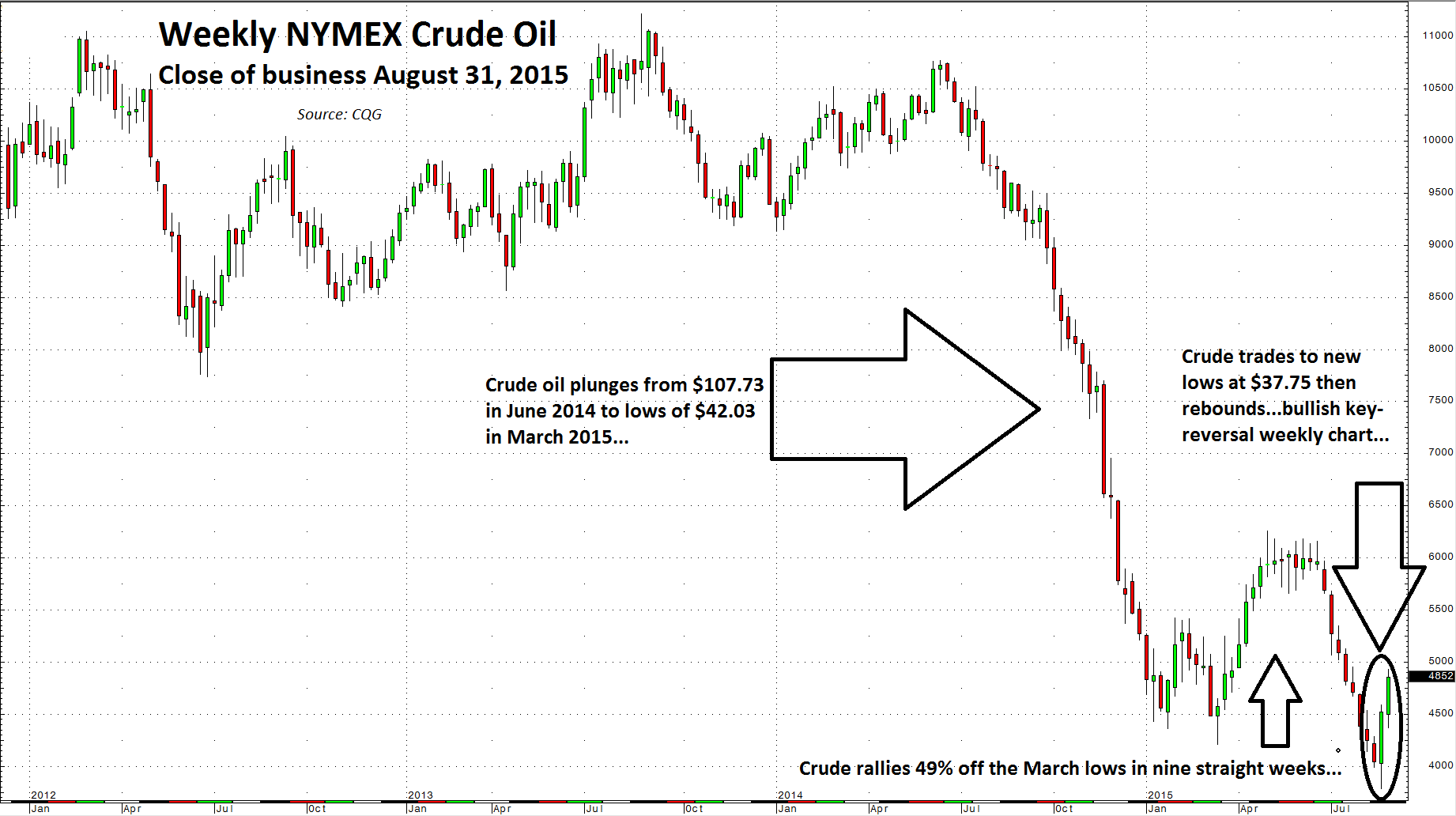Volatility is an investor's nightmare, but at the same time, it is a seasoned trader's paradise. During the final weeks of August, markets are traditionally quiet. As the vacation season ends, traders and investors historically keep a low profile. This year, that has not been the case.
On Monday, August 24, a tsunami of selling hit global asset markets. The Dow Jones Industrial Average dropped over 1,100 points in the first few minutes of trading. Gold and US bonds rallied in a flight to quality as market participants went into risk-off mode. The action in markets created an environment where divergence became the norm rather than the exception. Later that week, markets reversed.
The carnage of Monday transformed into volatility. One of the driving forces on that treacherous down day was China.
China and Markets
When China catches an economic cold, the rest of the world gets the flu. These days, all signs point to the fact that the Chinese economy has more than the sniffles. So far, in 2015, the Chinese central bank has cut interest rates five times. When the domestic equity markets moved sharply lower in July, the Chinese government announced new rules and regulations to inhibit selling and encourage buying. At the same time, they floated a one-trillion yuan infrastructure bond.
Most recently, the Chinese have devalued their currency, which trades at a peg against the US dollar. All of these moves are stimulative for the Chinese economy. The government is attempting to achieve a target growth rate of 7%. On August 24, global markets reacted to the economic slowdown in the Asian nation and panic set in. Turning a sluggish economy around is not an easy feat and fear shuttered through all asset classes.
Oil Volatility
As markets plunged on that fateful Monday in August, the price of crude oil made a new 6 1/2 year low as it traded down to $37.75 on the active month October NYMEX futures contract. NYMEX crude oil has been in a bear market since June 2014 when it traded at highs of over $107 per barrel. Increasing production from the US, Russia, and OPEC resulted in a supply glut and prices plunged.
In early March, many analysts were calling for oil prices to hit the $30s, $20s, or lower as crude fell to lows of $42.03. Moreover, as many equity indices traded on US markets contain companies in the oil patch, the bear market in oil contributed to the slide in stock prices. Then a funny thing happened on the way to those lower prices: the price proceeded to rally for nine straight weeks and recovered to over $60 per barrel, an increase of over 49%. In July, the price began its decent once again, culminating in the lows on August 24.
The news from China and contagion across all asset classes caused the August 24 lows; China is the demand side of the equation in many commodity markets. A weaker China weighs on oil demand. The bears that called for lower prices in March began barking again. However, after making lows, oil turned around for a number of reasons. Low oil prices have caused some members of OPEC to lobby for a change in production policy to support prices. Tension between Saudi Arabia and Iran over Yemen has resulted in worries about production facilities and logistical routes for the energy commodity in the Middle East. More than half of the world's oil reserves are located in that region.
As the price chart highlights, crude oil put in a bullish-key reversal on the weekly chart after making those new lows, closing the month of August at $49.20 per barrel -- 30.33% higher than the lows -- in just one week. On the first day of September, crude oil moved lower again. The daily trading ranges have increased in the energy commodity. Fundamental issues still weigh on crude oil, but there can be no doubt that this market is volatile.
A Crazy Summer is Likely to Lead to Even More Fun
The summer started with market volatility in all asset classes surrounding Greece and the European Union. It ended with economic issues in China. As we head into fall, a historically volatile period for equity markets, it is likely that recent volatility across all markets will continue.
High volatility means that daily trading ranges will increase and there will be more risk in taking long, short, or spread positions in the futures and options markets. Higher risk translates into more divergence and opportunities for nimble traders and investors. Risk is always a function of reward. Trading rather than investing is likely to be the most profitable path over coming weeks and months as volatility equals opportunity.
